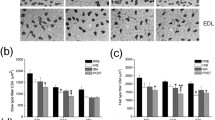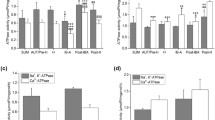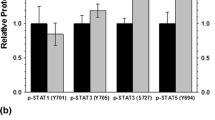Abstract
Whether hibernation accelerates or suppresses autophagy is still unknown. In the current study, we examined changes in autophagy in oxidative soleus (SOL) muscle in summer active (SA), pre-hibernation (PRE), torpor (TOR), interbout arousal (IBA), and post-hibernation groups of Daurian ground squirrels (Spermophilus dauricus). Here, the SOL muscle showed no significant atrophy during hibernation in regard to muscle wet weight, fiber cross-sectional area, or MuRF1 protein level. Autophagy-related proteins beclin1 and Atg7 increased significantly, whereas LC3-II decreased significantly in the PRE group compared with the SA group. However, neither the expression nor activity of cathepsin L showed any differences between the SA and PRE groups. In addition, beclin1, LC3-II, and the LC3-II/LC3-I ratio increased, p62 decreased, LC3 puncta increased, p62 puncta decreased, and cathepsin L activity increased in the TOR group compared with the PRE group. In contrast, beclin1, LC3-II, and the LC3-II/LC3-I ratio decreased, p62 increased, LC3 puncta decreased, p62 puncta increased, and cathepsin L activity declined in the IBA group compared with the TOR group. Moreover, the phosphorylation of Akt (Ser473) and mTOR (Ser2448) changed significantly during hibernation and showed an inverse relationship with autophagy changes. In conclusion, autophagy proteins displayed periodic oscillation in the torpor-arousal cycle, which may be advantageous in maintaining SOL muscle mass during the entire hibernation period. Furthermore, the Akt-mTOR signaling was decreased in TOR and increased in IBA group in the SOL muscle of Daurian ground squirrels during hibernation.




Similar content being viewed by others
Abbreviations
- SA:
-
Summer active
- PRE:
-
Pre-hibernation
- TOR:
-
Torpor
- IBA:
-
Interbout arousals
- POST:
-
Post-hibernation
- SOL:
-
Soleus muscle
- CSA:
-
Cross-sectional area
- MuRF1:
-
Muscle RING finger 1
- beclin1:
-
Autophagy-related-6
- LC3:
-
Microtubule-associated protein 1 light chain 3
- p62:
-
SQSTM1/sequestosome 1
- Atg7:
-
Autophagy-related-7
- Akt:
-
Protein kinase B
- mTOR:
-
Mammalian target of rapamycin
References
Abnous K, Dieni CA, Storey KB (2008) Regulation of Akt during hibernation in Richardson’s ground squirrels. Biochim Biophys Acta 1780:185–193
Andres-Mateos E, Brinkmeier H, Burks TN, Mejias R, Files DC, Steinberger M, Soleimani A, Marx R, Simmers JL, Lin B, Finanger HE, Marr TG, Lin BM, Hourde C, Leinwand LA, Kuhl D, Foller M, Vogelsang S, Hernandez-Diaz I, Vaughan DK, de la Rosa DA, Lang F, Cohn RD (2013) Activation of serum/glucocorticoid-induced kinase 1 (SGK1) is important to maintain skeletal muscle homeostasis and prevent atrophy. EMBO Mol Med 5:80–91
Baldwin KM, White TP, Arnaud SB, Edgerton VR, Kraemer WJ, Kram R, Raab-Cullen D, Snow CM (1996) Musculoskeletal adaptations to weightlessness and development of effective countermeasures. Med Sci Sports Exerc 28:1247–1253
Bartlett BJ, Isakson P, Lewerenz J, Sanchez H, Kotzebue RW, Cumming RC, Harris GL, Nezis IP, Schubert DR, Simonsen A, Finley KD (2011) p62, Ref(2)P and ubiquitinated proteins are conserved markers of neuronal aging, aggregate formation and progressive autophagic defects. Autophagy 7:572–583
Bodine SC, Latres E, Baumhueter S, Lai VK, Nunez L, Clarke BA, Poueymirou WT, Panaro FJ, Na E, Dharmarajan K, Pan ZQ, Valenzuela DM, DeChiara TM, Stitt TN, Yancopoulos GD, Glass DJ (2001) Identification of ubiquitin ligases required for skeletal muscle atrophy. Science 294:1704–1708
Cai D, McCarron RM, Yu EZ, Li Y, Hallenbeck J (2004) Akt phosphorylation and kinase activity are down-regulated during hibernation in the 13-lined ground squirrel. Brain Res 1014:14–21
Carey HV, Andrews MT, Martin SL (2003) Mammalian hibernation: cellular and molecular responses to depressed metabolism and low temperature. Physiol Rev 83:1153–1181
Chang H, Jiang SF, Dang K, Wang HP, Xu SH, Gao YF (2016) iTRAQ-based proteomic analysis of myofibrillar contents and relevant synthesis and proteolytic proteins in soleus muscle of hibernating Daurian ground squirrels (Spermophilus dauricus). Proteome Sci 14:16
Chang H, Jiang S, Ma X, Peng X, Zhang J, Wang Z, Xu S, Wang H, Gao Y (2018a) Proteomic analysis reveals the distinct energy and protein metabolism characteristics involved in myofiber type conversion and resistance of atrophy in the extensor digitorum longus muscle of hibernating Daurian ground squirrels. Comp Biochem Physiol Part D Genom Proteom 26:20–31
Chang H, Lei T, Ma X, Zhang J, Wang H, Zhang X, Gao YF (2018b) Muscle-specific activation of calpain system in hindlimb unloading rats and hibernating Daurian ground squirrels: a comparison between artificial and natural disuse. J Comp Physiol B 188:863–876
Chen C, Deng M, Sun Q, Loughran P, Billiar TR, Scott MJ (2014) Lipopolysaccharide stimulates p62-dependent autophagy-like aggregate clearance in hepatocytes. Biomed Res Int 2014:267350
Cho DK, Choi DH, Cho JY (2017) Effect of treadmill exercise on skeletal muscle autophagy in rats with obesity induced by a high-fat diet. J Exerc Nutr Biochem 21:26–34
Choubey V, Cagalinec M, Liiv J, Safiulina D, Hickey MA, Kuum M, Liiv M, Anwar T, Eskelinen EL, Kaasik A (2014) BECN1 is involved in the initiation of mitophagy: it facilitates PARK2 translocation to mitochondria. Autophagy 10:1105–1119
Cotton CJ (2016) Skeletal muscle mass and composition during mammalian hibernation. J Exp Biol 219:226–234
Fu W, Hu H, Dang K, Chang H, Du B, Wu X, Gao Y (2016) Remarkable preservation of Ca(2 +) homeostasis and inhibition of apoptosis contribute to anti-muscle atrophy effect in hibernating Daurian ground squirrels. Sci Rep 6:27020
Fujita N, Huang W, Lin TH, Groulx JF, Jean S, Nguyen J, Kuchitsu Y, Koyama-Honda I, Mizushima N, Fukuda M, Kiger AA (2017) Genetic screen in Drosophila muscle identifies autophagy-mediated T-tubule remodeling and a Rab2 role in autophagy. Elife. 6:e23367
Funderburk SF, Wang QJ, Yue Z (2010) The Beclin 1-VPS34 complex—at the crossroads of autophagy and beyond. Trends Cell Biol 20:355–362
Gao YF, Wang J, Wang HP, Feng B, Dang K, Wang Q, Hinghofer-Szalkay HG (2012) Skeletal muscle is protected from disuse in hibernating dauria ground squirrels. Comp Biochem Physiol A Mol Integr Physiol 161:296–300
He C, Klionsky DJ (2009) Regulation mechanisms and signaling pathways of autophagy. Annu Rev Genet 43:67–93
He C, Bassik MC, Moresi V, Sun K, Wei Y, Zou Z, An Z, Loh J, Fisher J, Sun Q, Korsmeyer S, Packer M, May HI, Hill JA, Virgin HW, Gilpin C, Xiao G, Bassel-Duby R, Scherer PE, Levine B (2012) Exercise-induced BCL2-regulated autophagy is required for muscle glucose homeostasis. Nature 481:511–515
Hindle AG, Otis JP, Epperson LE, Hornberger TA, Goodman CA, Carey HV, Martin SL (2015) Prioritization of skeletal muscle growth for emergence from hibernation. J Exp Biol 218:276–284
Hu NF, Chang H, Du B, Zhang QW, Arfat Y, Dang K, Gao YF (2017) Tetramethylpyrazine ameliorated disuse-induced gastrocnemius muscle atrophy in hindlimb unloading rats through suppression of Ca(2 +)/ROS-mediated apoptosis. Appl Physiol Nutr Metab 42:117–127
Hvid LG, Ortenblad N, Aagaard P, Kjaer M, Suetta C (2011) Effects of ageing on single muscle fibre contractile function following short-term immobilisation. J Physiol 589:4745–4757
Itakura E, Mizushima N (2011) p62 Targeting to the autophagosome formation site requires self-oligomerization but not LC3 binding. J Cell Biol 192:17–27
Ivakine EA, Cohn RD (2014) Maintaining skeletal muscle mass: lessons learned from hibernation. Exp Physiol 99:632–637
Jiang SF, Guo SP, Xue W, Wang HP, Goswami N, Gao YF (2015) Seasonal oxidative capacity of skeletal muscles in hibernating Daurian ground squirrels (Spermophilus dauricus). Can J Zool 93:593–598
Jung CH, Jun CB, Ro SH, Kim YM, Otto NM, Cao J, Kundu M, Kim DH (2009) ULK-Atg13-FIP200 complexes mediate mTOR signaling to the autophagy machinery. Mol Biol Cell 20:1992–2003
Kabeya Y, Mizushima N, Ueno T, Yamamoto A, Kirisako T, Noda T, Kominami E, Ohsumi Y, Yoshimori T (2000) LC3, a mammalian homologue of yeast Apg8p, is localized in autophagosome membranes after processing. EMBO J 19:5720–5728
Kim YC, Guan KL (2015) mTOR: a pharmacologic target for autophagy regulation. J Clin Invest 125:25–32
Klionsky DJ, Abdalla FC et al (2012) Guidelines for the use and interpretation of assays for monitoring autophagy. Autophagy 8:445–544
Larson J, Drew KL, Folkow LP, Milton SL, Park TJ (2014) No oxygen? No problem! Intrinsic brain tolerance to hypoxia in vertebrates. J Exp Biol 217:1024–1039
Lee K, So H, Gwag T, Ju H, Lee JW, Yamashita M, Choi I (2010) Molecular mechanism underlying muscle mass retention in hibernating bats: role of periodic arousal. J Cell Physiol 222:313–319
Levine B, Yuan J (2005) Autophagy in cell death: an innocent convict. J Clin Invest 115:2679–2688
Liebl MP, Hoppe T (2016) It’s all about talking: two-way communication between proteasomal and lysosomal degradation pathways via ubiquitin. Am J Physiol Cell Physiol 311:C166–C178
Liu WJ, Ye L, Huang WF, Guo LJ, Xu ZG, Wu HL, Yang C, Liu HF (2016) p62 links the autophagy pathway and the ubiqutin-proteasome system upon ubiquitinated protein degradation. Cell Mol Biol Lett 21:29
Luu BE, Wijenayake S, Zhang J, Tessier SN, Quintero-Galvis JF, Gaitán-Espitia JD, Nespolo RF, Storey KB (2018) Strategies of biochemical adaptation for hibernation in a South American marsupial, Dromiciops gliroides: 2. Control of the Akt pathway and protein translation machinery. Comp Biochem Physiol B: Biochem Mol Biol 224:19–25
Masiero E, Agatea L, Mammucari C, Blaauw B, Loro E, Komatsu M, Metzger D, Reggiani C, Schiaffino S, Sandri M (2009) Autophagy is required to maintain muscle mass. Cell Metab 10:507–515
Mizushima N, Komatsu M (2011) Autophagy: renovation of cells and tissues. Cell 147:728–741
Mizushima N, Yoshimori T, Levine B (2010) Methods in mammalian autophagy research. Cell 140:313–326
Moresi V, Carrer M, Grueter CE, Rifki OF, Shelton JM, Richardson JA, Bassel-Duby R, Olson EN (2012) Histone deacetylases 1 and 2 regulate autophagy flux and skeletal muscle homeostasis in mice. Proc Natl Acad Sci USA 109:1649–1654
Munson MJ, Ganley IG (2015) MTOR, PIK3C3, and autophagy: signaling the beginning from the end. Autophagy 11:2375–2376
Pankiv S, Clausen TH, Lamark T, Brech A, Bruun JA, Outzen H, Øvervatn A, Bjørkøy G, Johansen T (2007) p62/SQSTM1 binds directly to Atg8/LC3 to facilitate degradation of ubiquitinated protein aggregates by autophagy. J Biol Chem 282:24131–24145
Portt L, Norman G, Clapp C, Greenwood M, Greenwood MT (2011) Anti-apoptosis and cell survival: a review. Biochim Biophys Acta 1813:238–259
Reilly BD, Franklin CE (2016) Prevention of muscle wasting and osteoporosis: the value of examining novel animal models. J Exp Biol 219:2582–2595
Smuder AJ, Kavazis AN, Min K, Powers SK (2011) Exercise protects against doxorubicin-induced markers of autophagy signaling in skeletal muscle. J Appl Physiol (1985) 111:1190–1198
Vigelsø A, Dybboe R, Hansen CN, Dela F, Helge JW, Guadalupe GA (2015) GAPDH and β-actin protein decreases with aging, making Stain-Free technology a superior loading control in Western blotting of human skeletal muscle. J Appl Physiol (1985) 118:386–394
Wiersma M, Beuren TMA, de Vrij EL, Reitsema VA, Bruintjes JJ, Bouma HR, Henning RH (2018) Torpor-arousal cycles in Syrian hamster heart are associated with transient activation of the protein quality control system. Comp Biochem Physiol B: Biochem Mol Biol 223:23–28
Wu CW, Storey KB (2012) Regulation of the mTOR signaling network in hibernating thirteen-lined ground squirrels. J Exp Biol 215:1720–1727
Yang CX, He Y, Gao YF, Wang HP, Goswami N (2014) Changes in calpains and calpastatin in the soleus muscle of Daurian ground squirrels during hibernation. Comp Biochem Physiol A Mol Integr Physiol 176:26–31
Zhang Y, Tessier SN, Storey KB (2016) Inhibition of skeletal muscle atrophy during torpor in ground squirrels occurs through downregulation of MyoG and inactivation of Foxo4. Cryobiology 73:112–119
Zhang J, Li Y, Li G, Ma X, Wang H, Goswami N, Hinghofer-Szalkay H, Chang H, Gao Y (2017) Identification of the optimal dose and calpain system regulation of tetramethylpyrazine on the prevention of skeletal muscle atrophy in hindlimb unloading rats. Biomed Pharmacother 96:513–523
Acknowledgements
This work was supported by funds from the National Natural Science Foundation of China (Grant Nos. 31640072 and 31772459).
Author information
Authors and Affiliations
Contributions
HC and YG conceived and designed the experiments. XP, HC, XY, JZ, SX, HW, ZW and XM performed the experiments. XP and HC analyzed the data. HC wrote the paper. All authors read and approved the final manuscript.
Corresponding author
Ethics declarations
Conflict of interest
The authors declare that they have no competing interests.
Ethics approval
All procedures were approved by the animal care committee of the Wildlife Protection Society of China (SL-2012-42) and the Northwest University Ethics Committee.
Additional information
Communicated by H.V. Carey.
Publisher's Note
Springer Nature remains neutral with regard to jurisdictional claims in published maps and institutional affiliations.
Rights and permissions
About this article
Cite this article
Chang, H., Peng, X., Yan, X. et al. Autophagy and Akt-mTOR signaling display periodic oscillations during torpor-arousal cycles in oxidative skeletal muscle of Daurian ground squirrels (Spermophilus dauricus). J Comp Physiol B 190, 113–123 (2020). https://doi.org/10.1007/s00360-019-01245-5
Received:
Revised:
Accepted:
Published:
Issue Date:
DOI: https://doi.org/10.1007/s00360-019-01245-5




